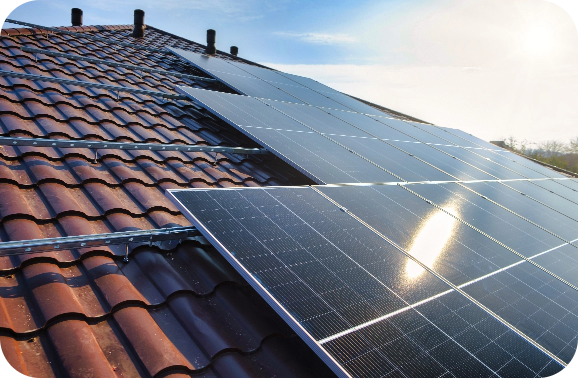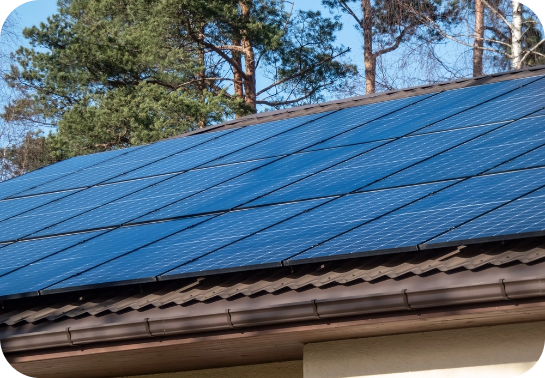Highest Watt Solar Panel: What You Need to Know

A new focus on renewable energy is gaining momentum and captivating the nation. Solar energy, especially, has emerged as a powerful contender in both our individual and societal quests for sustainable energy. Though plenty of panel types are available to those embarking on their solar journey, the 500-watt solar panel has become popular for its impressive and efficient output. Follow along for everything you need to know about the 500-watt solar panel.
What is a 500-Watt Solar Panel?
A 500-watt solar panel is a photovoltaic module with an output of 500 watts of electricity under ideal circumstances. While there are some panels available with a wattage higher than 500, these are less common and less accessible to most home and business owners. Solar panels harness sunlight and convert it into usable electricity.


Can You Use 500-Watt Solar Panels For Your Home?
If you’re considering using 500-watt solar panels for residential purposes, you’ll want to examine your circumstances surrounding available space, budget, and energy needs. Though high-wattage panels generate more energy, their size, and cost may make them an impractical option for residential installation. Always consult a solar professional to determine the most suitable panel size for your space.
Technology Used in 500-Watt Solar Panels
Monocrystalline Cells
Most 500-watt solar panels are made with monocrystalline silicon cells, which are known for their durability and high efficiency. The cells’ single-crystal structure allows for efficient light absorption and conversion into usable electricity.
Passivated Emitter Rear Contact (PERC) Technology
High-efficiency solar panels, including some 500-watt models, often utilize PERC technology. PERC involves placing a rear surface passivation layer on the panel to improve the absorption process and reduce energy loss in order to enhance the panel’s overall performance.
Bifacial Panels
Select 500-watt solar panels are created with a bifacial design, meaning electricity can be generated from both sides of the panel. These units capture sunlight on their front side in standard fashion, while the rear side utilizes diffused or reflected light to increase the overall output of the panel.
How Large Are 500-Watt Solar Panels?
The size of a 500-watt solar panel tends to vary based on the panel’s design and manufacturer. Generally, however, one can estimate that a 500-watt solar panel usually measures around 1 meter (3.3 feet) in width and 2 meters (6.5 feet) in height. A 500-watt panel will usually measure between a few centimeters to a couple of inches in thickness; these dimensions vary, however, depending on the panel’s materials and design. The beauty of solar energy is that technological advancements have enabled greater output from smaller solar panels. This innovation in power density has allowed for more efficient use of space, making solar installations more adaptable and versatile.


Pros & Cons of Highest Wattage Solar Panels
When selecting panels for your solar energy setup, be sure to consider the pros and cons of each type of panel. We’ve compiled some of the main benefits and downsides of choosing a 500-watt panel:
Pros
High Wattage
High-wattage solar panels have the ability to produce much more energy than their low-wattage counterparts, which is their primary advantage. Because of their high capacity, 500-watt panels are very beneficial for maximizing the generation of energy in limited space and for meeting higher energy demands.
Reduced Number of Solar Panels
When high-wattage panels are utilized properly, they can help reduce the number of total panels required to generate energy in a specific installation. Because each panel produces more energy, fewer panels are needed to achieve the same output of energy. This space efficiency can be advantageous in limited spaces or for creating a simpler, more aesthetically pleasing solar setup.
Reduced Wiring
When you install fewer solar panels, there is also a potential reduction in the required amount of wiring. Decreasing the amount of necessary wiring in your solar array is not only cost-saving but simplifies installation and can reduce the need for maintenance in the future.
Produce More Power
500-watt and other high-wattage panels can allow home and business owners alike to get more electricity from their solar array, increasing one’s independence from energy, improving their finances, and lessening their environmental impact.
Cons
Cost
500-watt solar panels, and others with a higher wattage rating, tend to cost more than their lower-wattage counterparts. Higher wattage panels’ increased energy output and the advanced technology with which they’re typically designed result in their higher price point. One should carefully consider, however, each type of panel’s benefits and the return they could potentially receive on their investment.
Weight
Solar panels with higher wattage are often heavier than lower wattage options due to their larger surface area and additional material. These changes are usually attributed to the design specifications required to generate a higher energy output. These panels’ bulkier physical attributes can present special challenges during the installation process, especially when installed on structures with weight limitations. Heavier panels may require reinforced support structures or additional measures to ensure the safety and security of your structures and panels.
Size
Similar to the issues presented by the weight of higher-wattage panels, the larger physical size of 500-watt solar panels can become difficult when determining a location for installation. Limited space on one’s ground or roof can restrict the use of some of these larger panels, reducing the production capacity of one’s solar array.
Technology Used
Standard- and high-wattage panels both utilize similar technologies, such as monocrystalline or polycrystalline silicon cells. The highest wattage panels, however, typically utilize more advanced features like Passivated Emitter Rear Contact (PERC) or bifacial technology for increased efficiency and output.
Cost
50-watt and other high-wattage solar panels are usually more costly than standard panels. The higher wattage panels’ increased energy output and innovative features contribute to their higher price. Standard panels tend to be less expensive, making them a popular and more affordable option, especially for residential installations.
Energy Output
Highest-wattage solar panels’ primary benefit is their ability to generate significantly greater amounts of energy. Panels with a higher wattage rating produce greater usable electricity, which makes the panels ideal for maximizing energy in a limited space. Standard-wattage panels, on the other hand, produce a lesser amount of energy but usually succeed in meeting the energy needs of residential solar users.

Ease of Installation
Both standard- and high-wattage panels can be installed on either ground-mounted systems or residential roofs. However, larger and heavier high-wattage panels may require additional structural support, while standard panels tend to be lighter and easier to install.
Size
Higher-wattage panels tend to be physically larger than standard panels. Their increased physical dimensions can present issues in finding proper installation locations, particularly in environments with limited space. Standard panels tend to come in a more compact and versatile size optimal for residential installations.
What Are 500-Watt Solar Panels Used For?
There are a variety of applications for the 500-watt panel, such as in commercial settings, residential complexes, and solar farms.
Commercial Installations
500-watt solar panels have become widely used, particularly in commercial contexts, due to their ability to generate greater amounts of electricity. These more powerful panels are commonly used in office complexes, commercial buildings, factories, and shopping malls. Their higher energy production makes them the ideal solution to the significant power needs of commercial operations. These efficient panels may also contribute significantly to reducing a business’s carbon footprint and operating costs.
Off-Grid Residential Complexes
Off-grid residential complexes — sites that aren’t connected to the main electrical grid — usually rely on solar energy to meet their energy needs. 500-watt panels are well-suited for such applications due to their increased capacity. A 500-watt panel can power a variety of residential loads, including heating and cooling systems, appliances, lights, and electronics. More than others, off-grid communities can benefit from the reliability and independence provided by higher-capacity solar panels.
Solar Farms
Solar farms, plants, or photovoltaic power stations are large-scale operations that harvest solar energy. These plants consist of many solar panels working in unison to produce significant amounts of energy. 500-watt solar panels are used on a large scale within solar farms due to their increased efficiency so that the plant can maximize its energy output. The more megawatts of electricity a farm can generate, the more it can contribute to the grid’s overall energy supply and reduce general reliance on fossil fuels.
What’s Next for High-Watt Solar Panels?
Solar technology will continue to advance. As these innovations continue, it’s possible that high-watt solar panels may become more affordable, compact, and efficient. Specialists in research and development are working to increase solar panels’ power density and conversion efficiency, as well as reduce their manufacturing costs. The hope is that these technological advancements will help encourage the adoption of high-watt solar panels on every scale.
If you’re interested in installing high-watt solar panels on your home, contact the team at Axia Solar to get started.